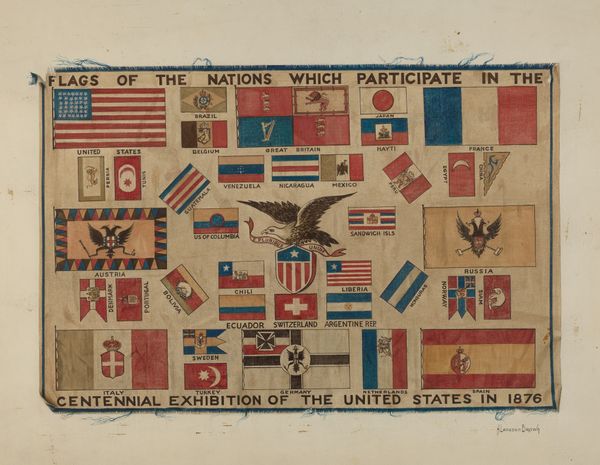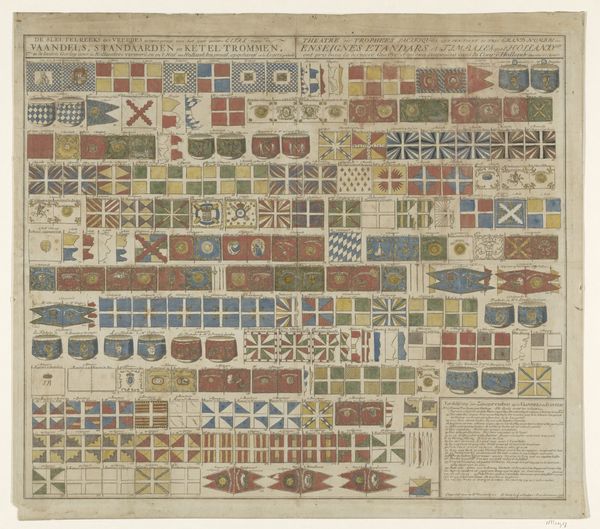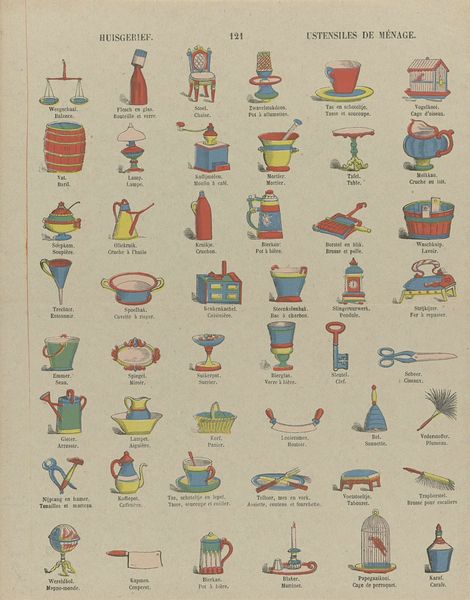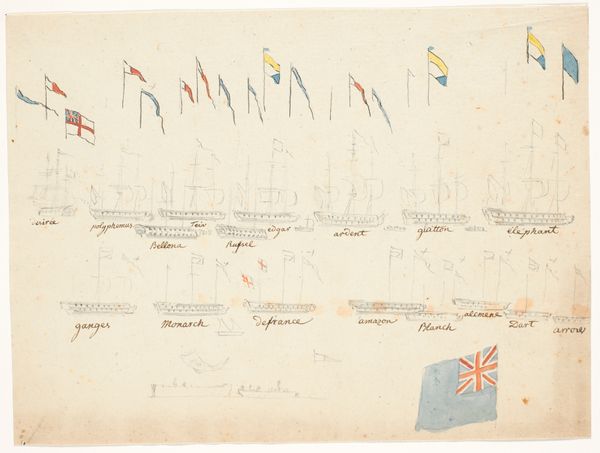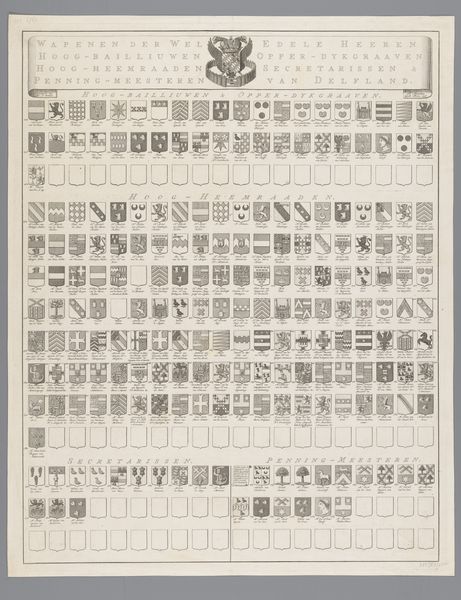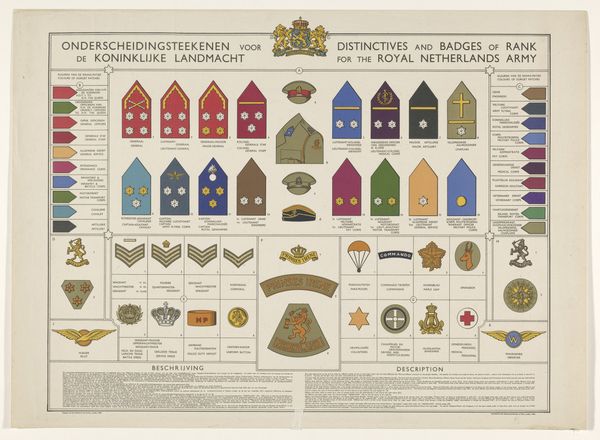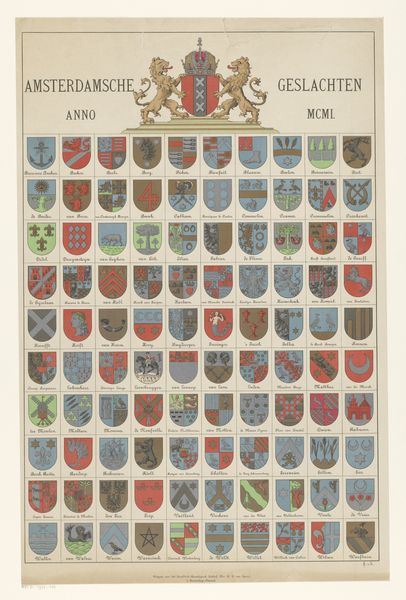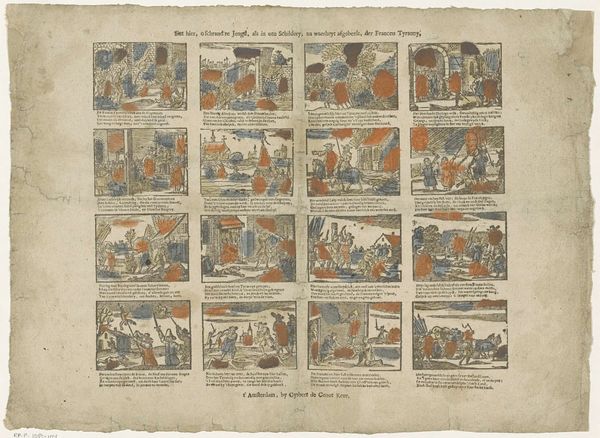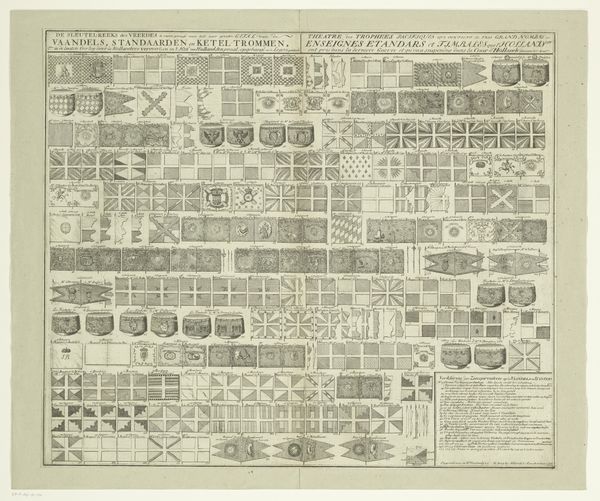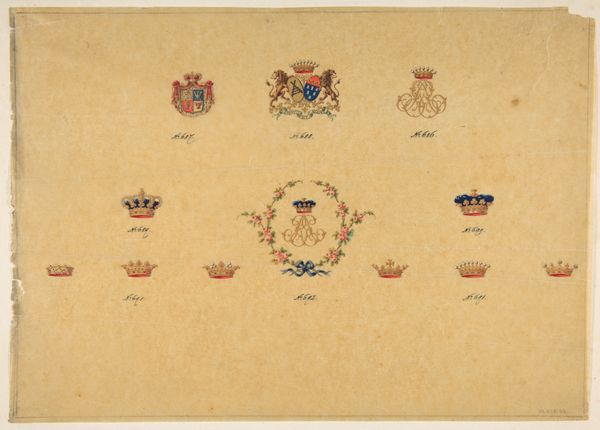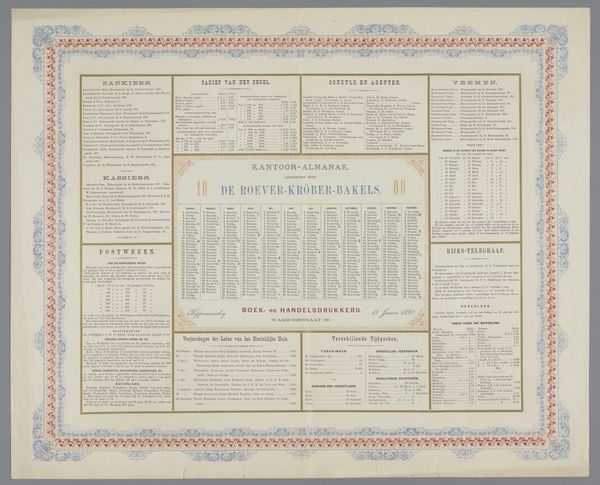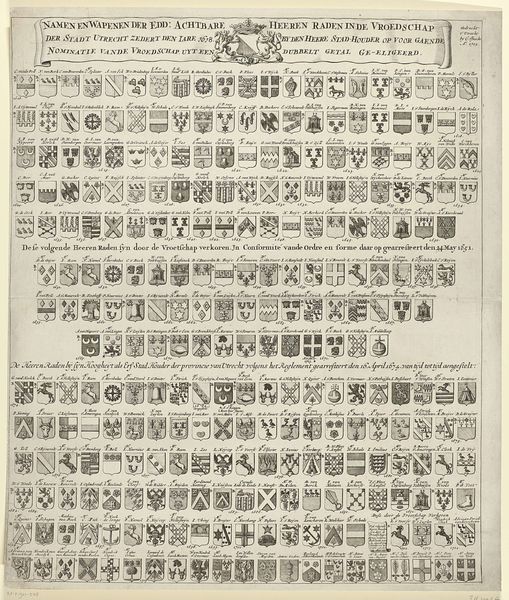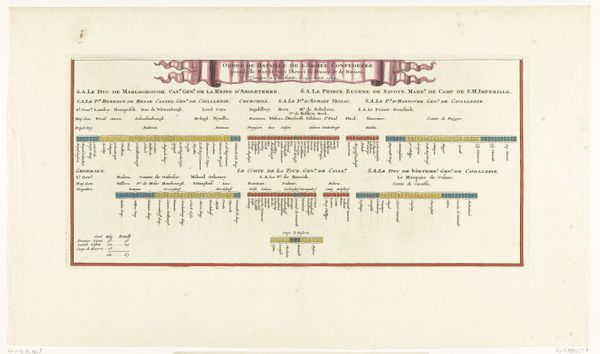
graphic-art, print, poster
#
graphic-art
# print
#
geometric
#
academic-art
#
decorative-art
#
poster
Dimensions: height 700 mm, width 530 mm
Copyright: Rijks Museum: Open Domain
Curator: Right, let's dive into this intriguing "Vlaggenkaart," or "Flags Chart," dating back to 1901 and attributed to J.H. de Bussy. It is an early example of print. Editor: My first impression is...order! It's like a little organized riot of colors and symbols. There's something inherently pleasing about grids. Though it seems almost encyclopedic. A decorative artifact meets knowledge catalog. Curator: Indeed. The organizational principle at play here is quite remarkable. You'll see it’s neatly divided into sections. First, we have 'Royal Standards and Flags', then 'Dutch Standards, Command, and Distinction Flags', and finally, 'Flags of Various Nations'. Look closely, and you observe, the printing is immaculate. Editor: I'm interested in the material effect; there's this curious, subdued palette--mostly muted reds, blues, and creams. These seem like a deliberate choice. So proper. It lends an old-world almost quaint gravity. It's like gazing into a time capsule of national aspirations rendered in miniature. It also reveals something of that specific graphic printing from the period. What do the geometric forms say? Curator: Good question. Formally, these geometric forms are statements of power and identity. Each flag, in its unique combination of shapes and colors, represents a nation's attempt to visually define itself, literally brand itself. In that time period, those emblems represent that sense of belonging that the designer and printer must have been completely cognizant of. But of course, to many nowadays the symbols now feel foreign, if at all even offensive, the exercise of identifying through national pride and global tension may come across very differently. Editor: Yes. There's this slightly melancholic air of bygone empires. It triggers introspection about the very notion of fixed identity--nationally, culturally...aren’t we just a flowing mix of narratives, histories and longings. Curator: That’s beautiful. So to summarize, perhaps beyond being merely a flag chart, this piece stands as a thoughtful visual exercise of a time of empires, identity, geometric abstraction, and quiet commentary about representation. Editor: A complex flag, signaling layers of history in elegant little packages. I quite agree!
Comments
No comments
Be the first to comment and join the conversation on the ultimate creative platform.
